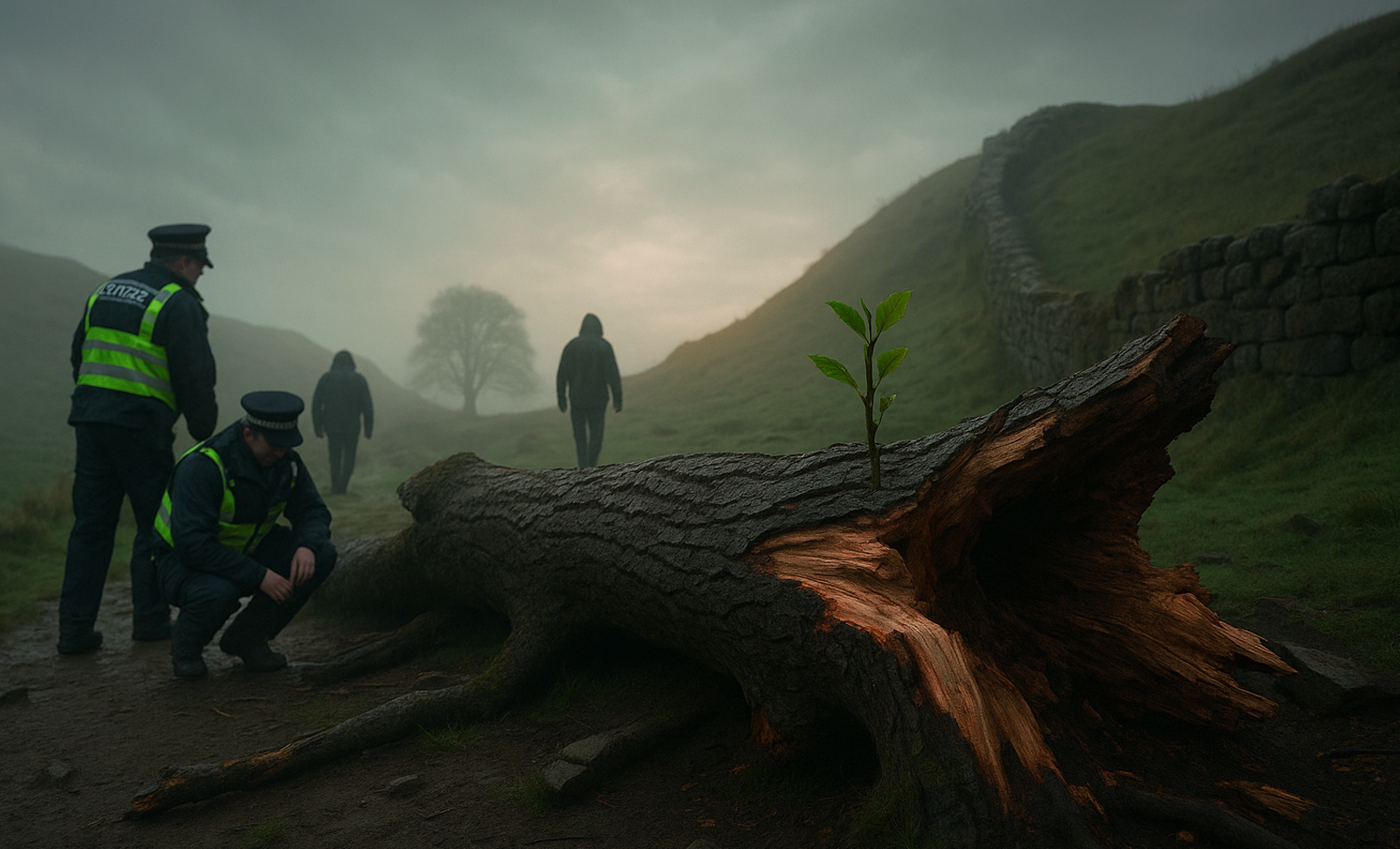In a case that stunned the UK and conservationists worldwide, two men have been sentenced to four years and three months in prison for cutting down one of Britain’s most beloved natural landmarks—the Sycamore Gap tree. The sentencing took place on July 15, 2025, at Newcastle Crown Court. Daniel Graham, 39, and Adam Carruthers, 32, were found guilty of criminal damage for deliberately felling the centuries-old tree located beside Hadrian’s Wall in Northumberland. The tree, which stood in a dramatic natural dip known as Sycamore Gap, was one of the most photographed trees in the country and held deep cultural significance.
The incident occurred on the night of September 28, 2023, during Storm Agnes. The pair traveled over 30 miles from Cumbria under the cover of night and high winds to execute what the judge described as a “moronic mission.” Using a chainsaw, the tree was brought down in less than three minutes. The act not only destroyed the iconic sycamore but also caused damage to Hadrian’s Wall—a UNESCO World Heritage Site dating back to Roman times. Mobile phone footage showed Carruthers operating the chainsaw while Graham filmed, and later text messages revealed a sense of bragging rather than remorse.
The Sycamore Gap tree, also known as the Robin Hood Tree, rose to fame after being featured in the 1991 film *Robin Hood: Prince of Thieves*. Estimated to be around 150 to 200 years old, the solitary tree had become a powerful symbol of natural beauty and cultural heritage. In 2016, it was voted Tree of the Year in England. Visitors from around the world made the journey to see it, and it often served as a site for proposals, memorials, and quiet reflection. Its sudden destruction was met with an outpouring of grief, disbelief, and anger across the nation.
During the trial, Carruthers’s defense attempted to frame the act as a moment of drunken stupidity, but the judge firmly rejected that narrative. Citing the level of premeditation, including choosing to act during a storm to avoid detection, Judge Christina Lambert stated that the crime was driven by bravado rather than recklessness. The prosecution described the felling as “mindless thuggery” and an insult to national heritage, emphasizing the emotional toll on the community and the long-term damage to an irreplaceable landmark.
The case marks a precedent in British legal history, being the first time individuals have been given a prison sentence for cutting down a tree. The sentence reflects the seriousness with which the court viewed the destruction—not only of a tree but of a piece of living history. The National Trust and Northumberland National Park Authority welcomed the ruling, highlighting its role in reaffirming the value of protecting cultural and natural heritage.
Despite the devastation, there are glimmers of hope. Shortly after the tree’s felling, experts discovered that the stump had begun to sprout new shoots. Additionally, saplings grown from seeds collected from the original tree are being cultivated, with the possibility of planting them in the same area to restore the landscape. A portion of the tree’s trunk has been preserved and placed on display at the Sill Visitor Centre near the original site, offering a place of remembrance and tribute.
Public response to the sentencing has largely been one of relief and approval. Many see it as justice served, not just for a tree, but for a shared symbol of identity and continuity. The National Trust continues to oversee conservation efforts in the area, and there are ongoing discussions about installing new protective measures for iconic trees and sites across the UK.
The destruction of the Sycamore Gap tree serves as a sobering reminder of how fragile and valuable our natural landmarks are. It underscores the importance of environmental stewardship and the need for legal systems to uphold the protection of cultural and historical treasures. The case has left an indelible mark on the national consciousness and sparked a broader conversation about heritage, responsibility, and the deep emotional bonds people form with the natural world.

















